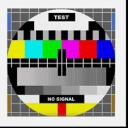Yahoo Answers จะปิดใช้งานในวันที่ 4 พฤษภาคม 2021 (เวลาตะวันออก) และตอนนี้เว็บไซต์ Yahoo Answers จะอยู่ในโหมดอ่านอย่างเดียว คุณสมบัติหรือบริการอื่นๆ ของ Yahoo หรือบัญชี Yahoo ของคุณจะไม่มีการเปลี่ยนแปลงใดๆ คุณสามารถค้นหาข้อมูลเพิ่มเติมเกี่ยวกับการปิดใช้งาน Yahoo Answers และวิธีการดาวน์โหลดข้อมูลของคุณในหน้าความช่วยเหลือนี้
Liftport lunar space elevator?
The lunar elevator will be anchored near the center of the portion of the moon visible from Earth. The ribbon will point toward Earth passing close to the Earth Moon L1. The ribbon can be up to about 200,000 miles long clearing the Earth's Geo sychronous orbit by about 7000 to about 70,000 miles. The circumference of the path is about 1,256,000 miles in about 27 days = 46,519 miles per day = 1938 miles per hour, which will vary somewhat. A space craft at the tip can be released so as to be flung toward Earth (or toward any other destination, except the Moon) at about that speed. The craft will enter Earth's atmosphere a few hours after release or Mars atmosphere a few years after release, assuming the release instant is optimum. (The tip swings like a pendulum and lengthens and shortens periodically) With additional propulsion the craft can get to Mars sooner, but propulsion will be needed to slow down for a soft landing at Mars or one of the tiny moons of Mars. Please refute, embellish or correct.
Thank you for those comments. The 1938 miles per hour is much less than orbital speed so to move away from Earth (or orbit Earth) some additional whip (and/or propulsion) is needed. If a collision with the counter weight can be avoided, leaving the ribbon while traveling down hill, at high speed may be practical.
The stress on a lunar ribbon is much less, so a very large amount of Kevlar is needed, or a much smaller amount of CNT = carbon nano tubes with great specs.
I agree not much use until we are mining and manufacturing on the Moon. Space craft lifting off from Earth can attach at or near the tip, with less energy than needed to get to geo orbit. Then make a very slow trip up hill to L1, using laser and solar energy. L1 to the Moon can probably be faster than is prudent, as this is down hill. Dynamic breaking the last few miles to the moon can provide significant electricity that may be useful on the Moon near the terminal.
A manned space station at the counter weight may be practical as it will have about as much gravity as the Moon. Does someone know how to calculate the average gravity at the counter weight? I suppose the whipping will annoy the humans. Several kinds of transients are likely, besides the 27 day whipping cycle.
3 คำตอบ
- PaulaLv 77 ปี ที่ผ่านมาคำตอบที่โปรดปราน
Nice ...
But --
1) no one is living on the moon
2) There is no way to make a ribbon 1000 miles long, let alone longer
3) There is no practical way to anchor it (assuming it could be made)
4) Any object launched would have to climb up the ribbon - so the ribbon would need to be very strong - a failure of the ribbon would result in the object falling straight down to the anchor point (along with the bottom part of the ribbon.
Apart from that it seems like a good idea. -- There is no atmosphere on the moon to disturb the ribbon.
- ?Lv 77 ปี ที่ผ่านมา
The moon librates - so the ribbon will whip back and forth a few thousand miles every month.
The material has not been invented yet.
The tip is in orbit, at spacecraft released will still be in orbit and falling at a plumet to earth - the tip is being held up - the orbital velocity is tiny for the spacecraft and it will re-enter.
- QuadrillianLv 77 ปี ที่ผ่านมา
Seems like a good party trick, but apart from that does it have any use?
Cheers!




